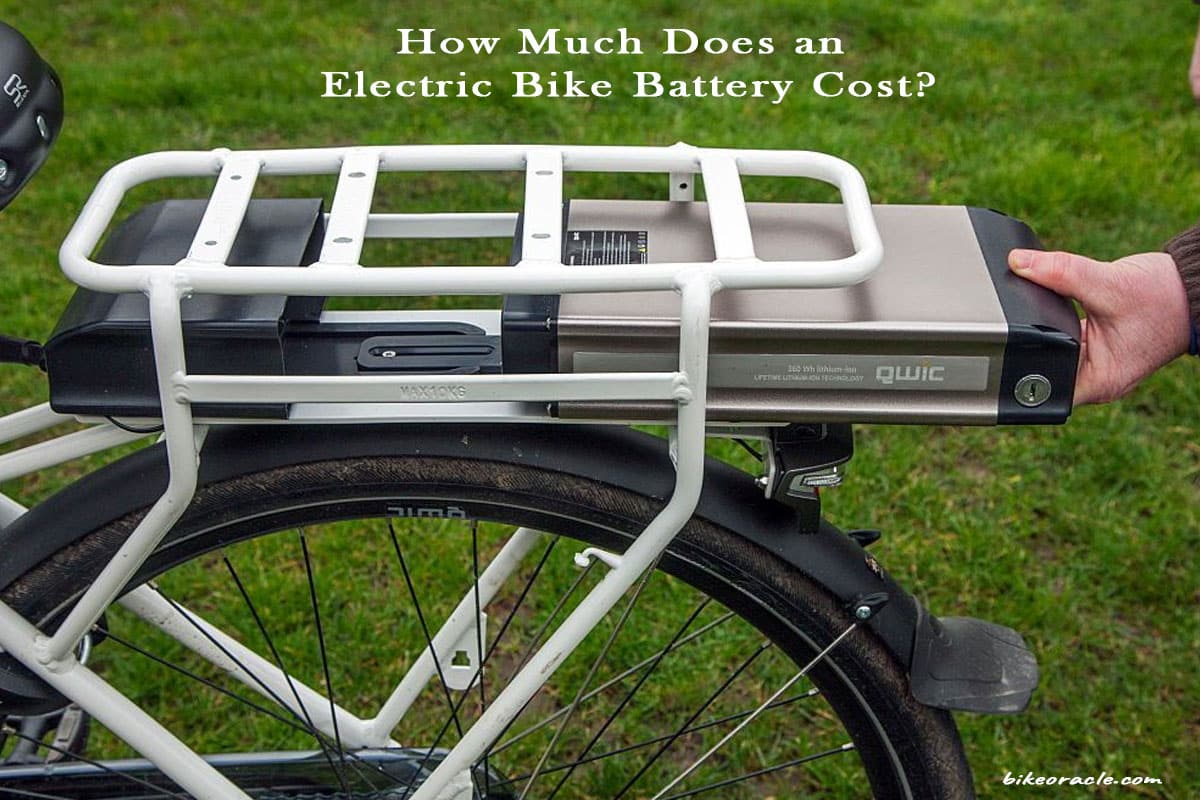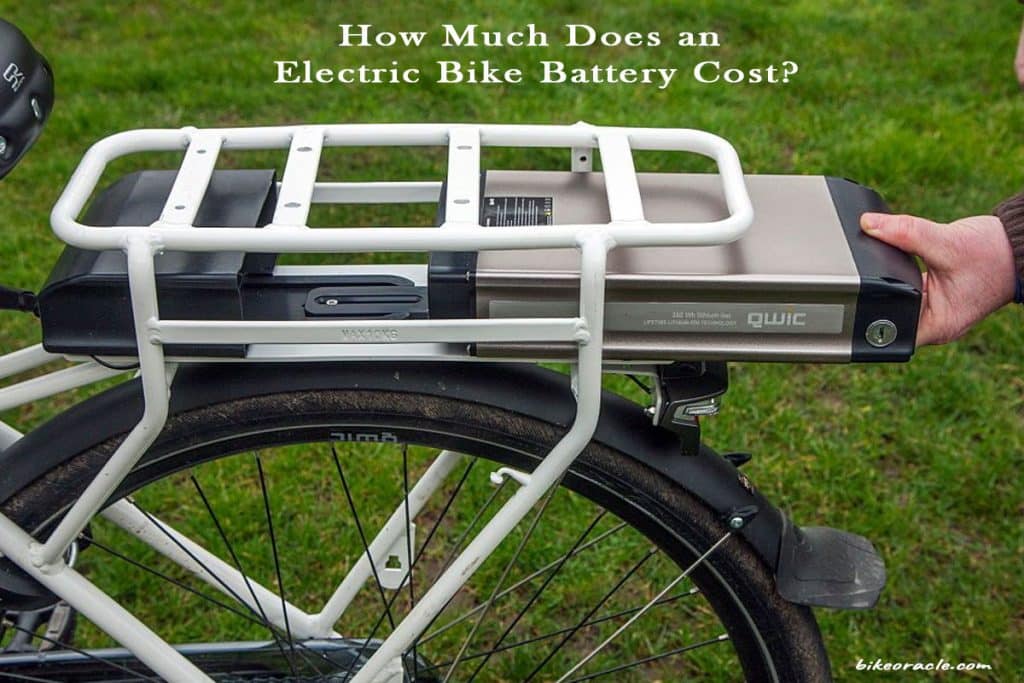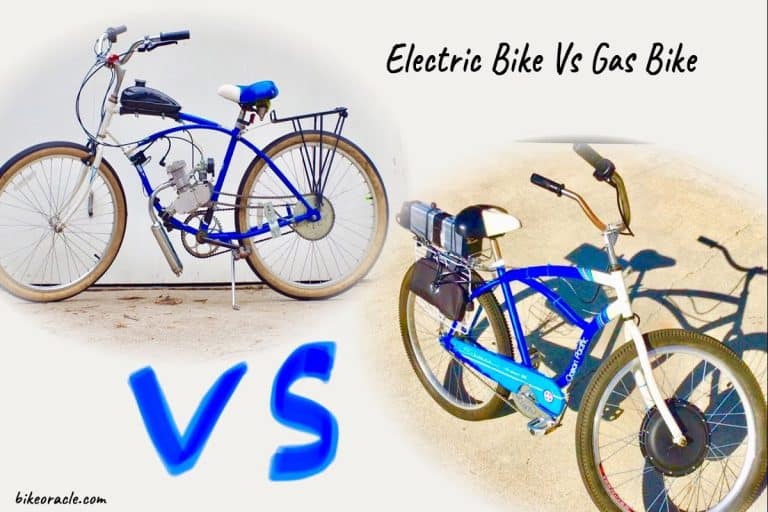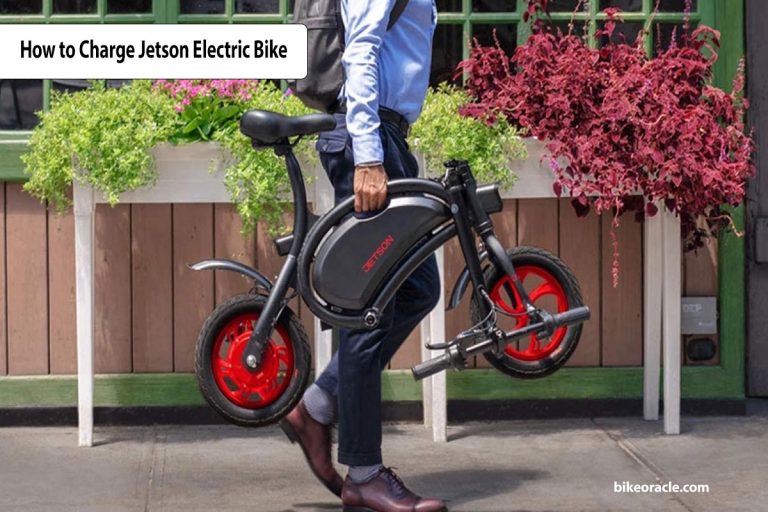How Much Does An Electric Bike Battery Cost?

In the realm of transportation, electric bikes, or e-bikes, have surged in popularity. These innovative bicycles, equipped with electric motors, offer a delightful and effortless cycling experience. With their ability to conquer diverse terrains, cover longer distances, and promote eco-consciousness, e-bikes have captivated a wide range of individuals.
But, how much does an electric bike battery cost? Understanding the costs associated with e-bike batteries is crucial for prospective buyers. The battery serves as the powerhouse, driving the motor and influencing the bike’s range and performance. Battery costs can vary based on factors like capacity, brand, quality, and technology.
Having knowledge of e-bike battery costs empowers buyers to make informed decisions that balance performance and affordability. Discovering the enchanting world of e-bike battery costs unlocks the potential to embark on pedal-powered adventures with confidence and style. Let’s discuss it in detail!
Decoding Electric Bike Batteries At A Glance – The Basics
Electric bike batteries serve as the heart of the e-bike, powering the motor and defining the distance you can cover on a single charge. They also affect the overall functioning of your e-bike. Let’s explore the various types of batteries and what factors contribute to their pricing.
A. Electric bike battery variants
Lithium-ion batteries:
Lithium-ion batteries are one of the most preferred options for e-bike batteries. Their top-tier energy storage capability, reliable life span, and a low self-discharge rate are qualities that riders can’t ignore. These batteries will last for 2 to 3 years. Don’t forget to maintain proper safety measures to stay safe from any unfortunate incidents.
Lithium polymer batteries:
On the other side of the battery spectrum, we have the Lithium polymer batteries, the evolved relatives of the lithium-ion breed.
These guys have a knack for being light on the weight scale and flexible in form, meaning they can be tailored into any shape that tickles an e-bike manufacturer’s fancy. On average, their lifespan ranges between 1 to 2 years or amounts to 300 to 500 full charge cycles.
Nickel-metal hydride (NiMH) batteries:
Nickel-metal hydride (NiMH) batteries present another alternative for powering e-bikes. While they may not offer the same energy density as lithium-based batteries, they are environmentally friendlier and generally more affordable. A NiMH battery typically lasts for around 500 to 700 charge cycles, which is approximately 2 years.
B. Elements impacting electric bike battery pricing
Battery capacity (Ah):
Measured in Ampere-hours (Ah), battery capacity is a key element impacting the cost of an e-bike battery. When it comes to e-bike batteries, the ones with more gusto – greater capacity – hold more energy, giving your e-bike the legs it needs to go the extra mile or many miles.
Picture this: an e-bike battery boasting a capacity of 20 Ah. That’s going to offer you a cruising range between 40 to 60 miles. The precise distance you’ll squeeze out of it depends on how efficiently your e-bike sips that stored energy. More capacity usually equates to a higher cost.
Voltage (V):
In the thrilling world of e-bikes, voltage is a key factor that amps up the price and determines the power and speed capabilities. A higher voltage, like 48V compared to 36V, gives your e-bike more muscle and a higher top speed.
It’s all about that extra “oomph” that comes from the increased voltage. So, when choosing an e-bike, remember that voltage plays a significant role in the electrifying performance and exhilarating speed you can experience.
Battery chemistry:
The specific battery chemistry also impacts the cost. Lithium-ion and lithium-polymer batteries cost more than NiMH ones. Why? They’re energy-packed and light as a feather. Though these batteries are expensive, they are a value for money option.
Brand reputation:
The standing of the battery brand is another determinant of cost. Renowned brands may come with a higher price, but they often assure better quality control, customer support, and warranty conditions.
Warranty period:
Finally, the warranty duration of the battery affects the price. A longer warranty duration might elevate the battery’s price, but it also offers buyers the assurance of a replacement or repair if any issue arises during the warranty period. Typically, the warranty period for e-bike batteries spans from 1 to 2 years.
How Much Does An Electric Bike Battery Cost – Average Price Range for E-Bike Batteries
A. Entry-level electric bike batteries
Cost range for basic lithium-ion batteries:
Entry-level electric bike batteries typically range from $200 to $500. These batteries are usually equipped with basic lithium-ion cells, offering a decent balance between affordability and performance. The capacity of entry-level batteries typically falls between 300Wh and 500Wh, providing a moderate range for casual riders and urban commuting.
Factors affecting pricing in entry-level batteries:
The cost of entry-level electric bike batteries is influenced by factors such as brand reputation, cell quality, and manufacturing processes. Cheaper options may use lower-quality cells and have limited warranty coverage, while slightly pricier options often offer better reliability and longevity.
B. Mid-range electric bike batteries
The price range for mid-level lithium-ion and lithium polymer batteries:
Mid-range electric bike batteries generally range from $500 to $800. These batteries feature improved capacity and performance compared to entry-level options. With capacities ranging from 500Wh to 750Wh, they offer extended-range capabilities suitable for more demanding riding scenarios.
Features and specifications affecting the cost:
The cost of mid-range electric bike batteries is influenced by factors such as cell technology, energy density, and additional features. Batteries utilizing advanced lithium-ion or lithium polymer cells with higher energy densities tend to come at a higher price point. Moreover, features like integrated battery management systems (BMS), improved water resistance, and faster charging capabilities contribute to the overall cost.

C. High-end electric bike batteries
Premium lithium-ion and lithium polymer batteries:
High-end electric bike batteries are available in the price range from $800 to $2,000. These batteries offer exceptional performance, extended range, and advanced features. Capacities can exceed 750Wh, providing ample power for long-distance rides and challenging terrains.
Advanced features contributing to higher prices:
The higher price of high-end electric bike batteries can be attributed to advanced features such as higher-quality cells, superior energy density, enhanced durability, and intelligent BMS. These batteries often come with extended warranty coverage, offering peace of mind to riders seeking top-tier performance and longevity.
Factors Influencing Electric Bike Battery Costs
A. Battery capacity (Ah) and range
How battery capacity affects the price
Battery capacity, measured in ampere-hours (Ah) is one of the key factors influencing the cost. Higher battery capacity generally translates to a longer range, allowing riders to go greater distances with single charge. However, this increased capacity often comes at a higher price. Manufacturers invest in higher-quality cells and larger storage capacity to offer extended range, which results in an increase in the overall cost of the battery.
Balancing capacity needs with budget considerations
While it may be tempting to opt for the highest capacity battery available, it’s essential to consider your actual usage requirements and budget constraints. If you primarily use your electric bike for short commutes or occasional rides, a lower capacity battery may suffice and be more cost-effective. Assess your typical riding habits and determine the range you realistically need. By striking a balance between battery capacity and budget considerations, you can make a more informed decision.
B. Voltage (V) and performance
Higher voltage batteries and their impact on cost
Another factor to consider is the voltage of the electric bike battery. Higher voltage batteries tend to deliver greater power output, resulting in improved performance and acceleration. However, these higher voltage systems typically come at a higher cost. The components required to handle the increased voltage and power output, such as controllers and wiring, add to the overall price of the battery.
Assessing the relationship between voltage and desired performance
When evaluating the relationship between voltage and desired performance, it’s important to strike a balance between your expectations and budget. While a higher voltage battery can provide thrilling speed and enhanced performance, it may not be necessary for everyone. Consider your riding preferences, whether you prioritize speed or prefer a more leisurely ride. Assess how much you are willing to invest in achieving your desired level of performance, keeping in mind that higher voltage batteries may incur additional costs.
C. Battery chemistry and longevity
Comparing different battery chemistries and their cost implications
Battery chemistry plays a crucial role in both the performance and cost. Different chemistries, such as lithium-ion, lithium-polymer, and lead-acid, have varying characteristics and price points. Lithium-ion batteries are the most common and offer a good balance of energy density, weight, and longevity. While they tend to be more expensive upfront, they provide superior performance and longer lifespan compared to other chemistries.
Long-term cost-effectiveness of different chemistries
When considering the long-term cost-effectiveness of different battery chemistries, it’s important to evaluate factors beyond the initial purchase price. Lithium-ion batteries, despite being pricier upfront, offer better energy efficiency and longer lifespan. They require less frequent replacements, reducing the overall cost of ownership in the long term. On the other hand, lead-acid batteries may have a lower upfront cost, but their shorter lifespan and lower energy density can lead to more frequent replacements, ultimately increasing the total cost over time.
Considering Brand Reputation and Battery Cost
A. Recognizing the influence of brand on battery prices
Established brands vs. lesser-known brands
Renowned e-bike brands tend to charge higher prices for their batteries due to their brand recognition and customer trust. Lesser-known brands may offer lower-cost batteries but may lack the same level of quality and reliability.
Factors affecting brand reputation in the market
Brand reputation in the e-bike industry is influenced by factors such as product performance, durability, customer support, and customer satisfaction. Brands that consistently deliver on these aspects build a strong reputation, allowing them to command higher prices for their batteries.
B. Analyzing the correlation between brand reputation and battery cost
Pricing strategies of reputable brands
Reputable e-bike brands often invest in research and development to produce high-quality batteries. This commitment to excellence translates into higher production costs, which are reflected in the pricing of their batteries. The reputation of these brands justifies the premium price tag.
Assessing the value proposition of renowned brands
Renowned e-bike brands provide value beyond the battery itself. They offer comprehensive warranties, reliable customer service, and a track record of delivering top-notch performance. These factors contribute to the overall value proposition of the brand, which can justify the higher cost of their batteries.
Warranty and Battery Cost
A. Importance of warranty coverage for electric bike batteries
Having a comprehensive warranty coverage is crucial when it comes to electric bike batteries. The Velowave Fat Tire E-bike, for instance, offers a generous warranty period of 2 years for its battery.
B. How warranty affects the overall cost of a battery
The warranty directly influences the overall cost of an electric bike battery. The Opeak 750W Foldable Electric Bike, with its 1-year warranty, tends to have a lower price compared to other models with longer warranty periods.
C. Comparing warranty periods and their impact on battery prices
When comparing different electric bike batteries, it is important to consider the warranty periods and their impact on prices. For example, the Velowave Fat Tire E-bike’s battery warranty of 2 years may contribute to a slightly higher cost compared to batteries with shorter warranty periods.
Battery Replacement vs. Battery Repair
A. Considering battery repair options for cost savings
Repair options can be a cost-effective choice for electric batteries. Battery repair services, such as replacing individual cells, can be less expensive than a complete battery replacement.
B. Factors to consider between battery replacement and repair
Factors like the overall condition of the battery, the extent of the damage, and the cost of repair versus a new battery should be taken into account for deciding between battery replacement and repair.
C. Cost implications of repair versus replacement
The cost of battery repair can vary depending on the specific issue and the type of battery. In some cases, repair costs may be significantly lower than the cost of purchasing a brand new battery.
Additional Cost Considerations
A. Charger and accessories cost
Cost of electric bike battery chargers
Electric bike battery chargers can range in price depending on the brand and specifications. Prices can start from $30 for basic chargers and go up to $100 or more for high-end, fast-charging models.
Optional accessories that impact overall cost
Additional accessories like carrying bags, extra connectors, or battery locks can increase the overall cost of owning an electric bike battery. Prices for these accessories can vary but typically range from $10 to $50.
B. Installation and labor costs
Hiring professionals for battery installation
While some electric bike owners may choose to install the battery themselves, hiring professionals for battery installation can ensure proper and safe installation. Professional installation services can cost around $50 to $100.
Associated costs and considerations
It’s important to consider any additional costs associated with battery installation, such as transportation fees or any modifications required to fit the battery onto the bike frame. These costs may vary depending on the specific circumstances.
Strategies for Cost Savings
A. Research and comparison shopping
When looking to save on electric bike battery costs, it’s essential to conduct thorough research and comparison shopping. Explore different sellers and retailers to find competitive prices and attractive deals.
Exploring different sellers and retailers
Compare prices from various sellers to find the best deals. Look for authorized dealers that offer competitive pricing on high-quality electric bike batteries.
Utilizing online resources for price comparison
Take advantage of online resources that allow you to compare prices from different sellers. This enables you to find the most cost-effective options for electric bike batteries.
B. Evaluating used or refurbished batteries
Considering used or refurbished batteries can be a viable option for saving costs. However, it’s important to weigh the pros and cons before making a decision.
Pros and cons of purchasing used batteries
Used electric bike batteries can be more affordable but may have reduced performance or shorter lifespan compared to new batteries. Evaluate the condition and history of the battery before purchasing.
Reliable sources for used electric bike batteries
Look for reputable sellers or certified refurbishing centers that offer warranties or guarantees on used electric bike batteries. This helps ensure you’re getting a reliable product.
C. Battery maintenance and care
Implementing proper battery maintenance and care practices can significantly extend its life and optimize performance, resulting in long-term cost savings.
Practices to extend battery life and optimize performance
Regularly charge the battery according to manufacturer guidelines and avoid overcharging or deep discharging. Store the battery in a cool, dry place and protect it from extreme temperatures and moisture.
Long-term cost savings through proper maintenance
By following recommended maintenance practices, you can prolong the lifespan of your electric bike battery and avoid costly replacements. This leads to significant long-term cost savings.
Remember, employing these strategies and adopting good battery maintenance practices can help you save money and maximize the lifespan and performance of your electric bike battery.
Conclusion
After exploring the factors influencing electric bike battery cost, it’s clear that prices vary based on capacity, quality, and brand. Higher-capacity batteries with advanced features can cost more.
Investing in a higher-quality battery might result in better performance and longevity, ultimately providing a more satisfying riding experience. Each individual has unique requirements when it comes to electric bike batteries. Assess your riding habits, desired range, and budget constraints.
Research different battery options, consult with experts, and read customer reviews to make an informed decision that aligns with your personal needs and preferences. Choose wisely to enjoy a reliable and efficient electric bike experience.



![Are E-Bikes Considered Motorized Vehicles? [Answered]](https://bikeoracle.com/wp-content/uploads/2023/10/Are-E-Bikes-Considered-Motorized-Vehicles-768x403.jpg)

